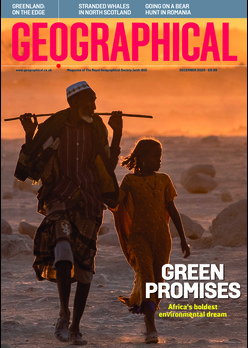
Stuart Butler travels to the Faroe Islands to see a unique project where the tourists are doing the hard work
By
‘I haven’t got anything against tourism. I also make money from tourists. But there are so many people coming here now. They all come to take the same picture to put on Instagram,’ Johan, a sheep farmer in the Faroe Islands, laments. ‘They show no respect. They walk wherever they want and park their cars wherever they want. They take pictures of my house. They disturb the sheep. They ignore the signs telling them to keep out of the fields.’
As Johan spoke, I took in the views around us. It was hardly a surprise that tourists were so attracted to this place. The ubiquitous sheep grazed in front of a small, turf-roofed church, waterfalls cascaded down the steep-sided mountains and the sea, which today was unusually calm, had squeezed between cliffs and tidal sand bars to merge with a lake that was as blue as Scandinavian eyes.
‘The Faroe Islands are small, and we cannot cope with too many tourists, but now everyone wants to come here,’ Johan says with a shrug.
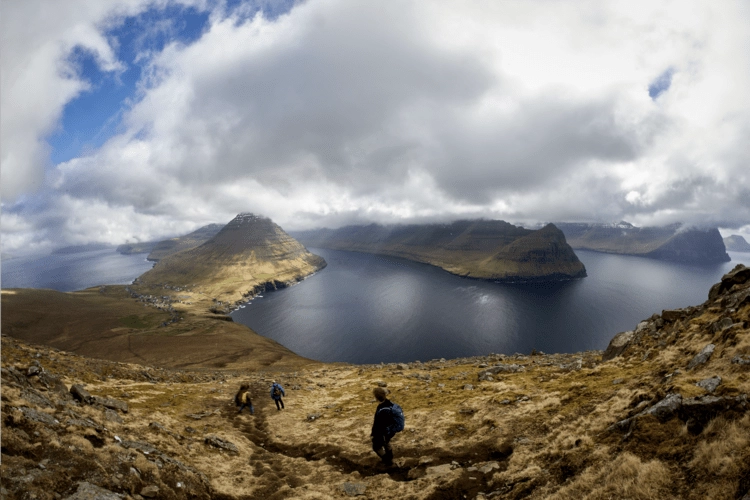
Overtourism clearly isn’t just a problem for Venice or Barcelona. Unsustainable numbers of tourists can also prove problematic in some of the world’s wildest destinations. Cast adrift in the most storm-wracked corner of the North Atlantic, the 18 islands that make up the Danish-governed Faroe Islands are a hard place. Imposing, dark-walled cliffs hundreds of metres high rise up above detonating waves. Storm after storm rolls in. If it’s not raining, then it’s probably pouring, and most of the time, the wind blows hard enough to whip the wool off the thousands of sheep that live here. In most respects, it’s hard to imagine a place less likely to be faced with the problem of too many visitors.
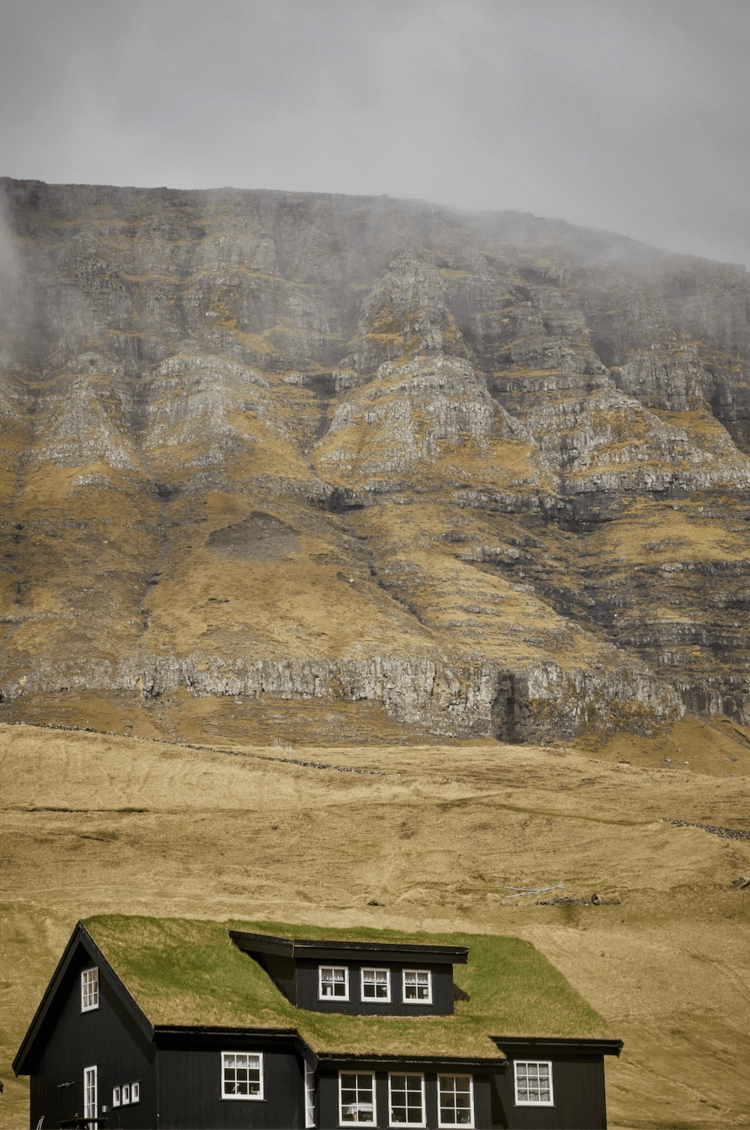
However, there are fears that the growing number of visitors to the archipelago is having a negative impact. The Faroe Islands, which have a population of 53,000, received around 100,000 tourists in 2022 (the most recent year for which statistics are available), and numbers are continuing to rise. While 100,000 is still a long way off the deluge of tourists who flood the streets of European capitals each year, it’s enough to make farmers such as Johan nervous.
That’s partially due to the fact that although the landscape of the Faroes looks tough, that’s not the case. The heathery moorlands that cover almost every square metre of these islands are easily damaged by being repeatedly trodden on. Once damaged, the short growing season means it can take years for the vegetation to grow back. There are certain sights and places in the Faroes – such as the valley where Johan farms – that every visitor seems to want to visit, and so it doesn’t take long before even a relatively small number of visitors can cause a great deal of erosion and damage to the pastures that the omnipresent sheep rely on.
The islands are famed for their sheep. There are at least 70,000 in the Faroes and while sheep farming now plays a fairly small role in the local economy (tourism plays
a much bigger part), it does play a central part in the islands’ cultural identity. Even the name Føroyar (Faroe Islands) comes from the old Norse word Færeyjar, which means Sheep Islands. For this reason, the pastures on which the sheep are reliant are considered sacrosanct by almost every Faroese citizen. The thought of ever-greater numbers of tourists trudging over these pastures is enough to make many a Faroese bristle with indignation.
It’s a problem of which the tourist board, Visit Faroe Islands, is acutely aware, as representative Súsanna Sørensen told me. ‘There has been an increase in the voices of people who worry about the number of tourists. In the process of writing our new tourism strategy, we invited all Faroese to give us their say on how tourism should develop in future years, and we invited a large group of Faroese, from farmers and the inhabitants of remote islands to entrepreneurs, creatives, people involved in tourism and others, to a workshop day to discuss these issues. One of our goals is that 80 per cent of the Faroese should experience the positive effects of tourism. We want to achieve that by continuing the conversation with the people who live in the areas where there might be too many visitors.’
Visit Faroe Islands and the Faroese government wanted to do more than just hold a few token meetings; they wanted to take positive, on-the-ground action to ensure that all citizens of the Faroes felt that tourism works, and they came up with a novel idea. They decided to do something that would make most other tourist boards run a mile. Popular tourist sites, attractions and trails across the archipelago would be closed to tourists for a few days every year. They would then welcome a small number of volunteers from across the world to join local people in restoring areas that had been eroded or otherwise damaged through natural weathering or too many people visiting.
As a concept, it would be like forcing tourists in Rome to restore the Colosseum before they were allowed to photograph it. The project, which was launched in 2019, is known as ‘Closed for Maintenance’, and it has been a roaring success among visitors to the archipelago and, equally importantly, local people themselves.

Each year (aside from a pause during the Covid-19 pandemic) since its inauguration, between six and 11 sites across the archipelago are closed for maintenance. So far, 695 (423 foreigners and 272 Faroese) volunteers have worked on 54 projects across ten islands. Since its inception, more than 23,000 people from across the world have applied. To come up with potential project sites, the tourist board coordinates with local people and municipalities to identify areas where footpaths and hiking trail markers need maintenance work, viewpoints need constructing, environmental projects need establishing or historical sites require repairs.
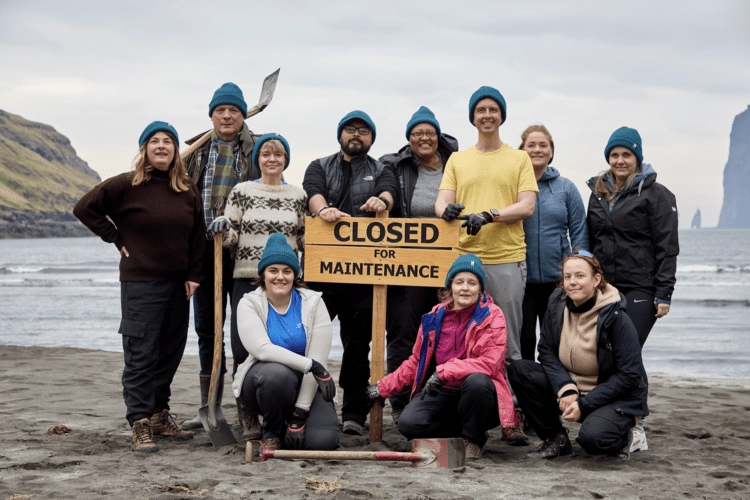
When I meet Michelle Jones, an American participant in the 2024 Closed for Maintenance project, she’s busy shifting big boulders, rounded smooth by decades of wave action, around the dark-sand beach that fronts the village of Tjørnuvík. There used to be a clear, accessible- to-all walkway down onto this beach, but a few years ago, an angry North Atlantic buried it under rocks. Now Michelle and other members of this site’s Closed for Maintenance team, which includes people from the Faroe Islands, the USA, Mexico, Italy and Denmark, are removing the rocks and rebuilding the pathway.
Michelle tells me that although this was her first visit to the Faroes, she had been to Iceland a number of times and while there had seen examples of erosion and environmental vandalism committed by tourists. ‘I saw graffiti, litter and garbage at some of the most pristine sites, trampled flora by those who just can’t stay on a path – or had no path to use, illegal off-road driving, destruction of natural reserves, and more,’ she tells me. ‘So, when Closed for Maintenance popped up on my [social media] newsfeed, I thought it was the best way for me to give back to the environment and make up for the bad deeds of fellow travellers.’
Heaving aside another boulder, she continues: ‘I thought we were going to be picking up trash or planting trees. Instead, some groups have repaired cairns, and some fenced off land for an agricultural project for a museum. Our group is building and repairing footpaths. And while it first appeared that we were just altering nature for the sake of human beings, what we are really doing is giving nature a fighting chance. The sheep are hopefully getting a break as people will use our paths to walk on instead of traipsing through the grass the sheep eat. Farmers will get a break, too as they won’t have to repair fences as much or spend extra money on animal feed. And nature will get a break.’

As we talk, Michelle asks me to help her haul a particularly heavy and stubborn boulder out of the way and, before I know it, my planned afternoon rambling over the headland has turned into an afternoon of path reconstruction. Working alongside the Closed for Maintenance team, I realise that even though the members had only met one another the day before, firm friendships had quickly developed between the local and foreign volunteers. It makes me think of something that Súsanna from Visit Faroes had told me: ‘The purpose of the initiative was to find a way to avoid the damage that growing tourism would cause to the nature of the islands. We wanted to show that our international guests are willing to give back to the country they are visiting and that tourism could be used for good.’
In a break between shifting rocks, I join the rest of the team at some picnic benches in the village, where a local man presents us with coffee and waffles with sour cream and jam. Tucking into this classic Scandinavian treat, I fall into conversation with Faroese local Óluva Poulsen. She tells me that this is her fourth time participating in the Closed for Maintenance project and that each experience has been rewarding.
‘Having travelled extensively in other countries, I have experienced immense kindness and learned about diverse cultures and people. This made me want to reciprocate that kindness to visitors from other countries. Another reason for my participation is the opportunity to make new friendships with people from around the world. In doing so, I simultaneously gain deeper insights into my own country.
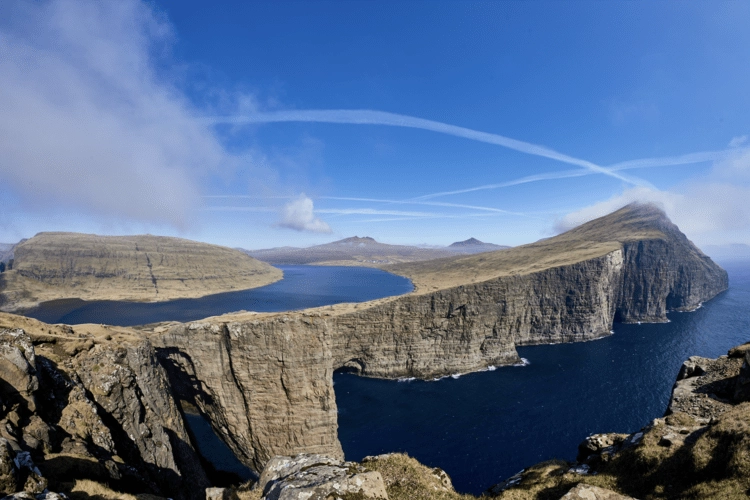
There is a Faroese saying: “Gløgt er gestsins eyga,” which translates to, “The guest’s eye is sharp.” It means that guests often notice things that locals might overlook and this offers me fresh perspectives and appreciation of my home. Additionally, I cherish the chance to enjoy the natural beauty of the Faroe Islands with people who share similar interests, such as sustainability and environmental protection. The initiative not only aims to preserve and improve the Faroese environment, but it also fosters a sense of community among participants.’
Of course, not all sheep farmers in the Faroe Islands are as against tourism as Johan. Many are now partially reliant on tourists to supplement the meagre income sheep farming generates. On my last day in the islands, while wandering the drizzle-soaked headlands close to the southern tip of the island of Eysturoy, I met fifth-generation sheep farmer Harriet. She was sitting, quite happily, in a damp, muddy field, tickling one of her sheep under its chin, ‘She loves it when I do this,’ Harriet explained. ‘Sometimes she just falls asleep while I’m tickling her.’
Clearly, despite her long family history in sheep rearing, Harriet wasn’t a classic Faroese sheep farmer. And so, I took the opportunity to ask her about her thoughts on the potential of overtourism in the Faroes. ‘The land here is delicate and can be easily damaged if too many people walk across it,’ she told me. ‘But, it’s also very hard to make a living purely from sheep farming.’
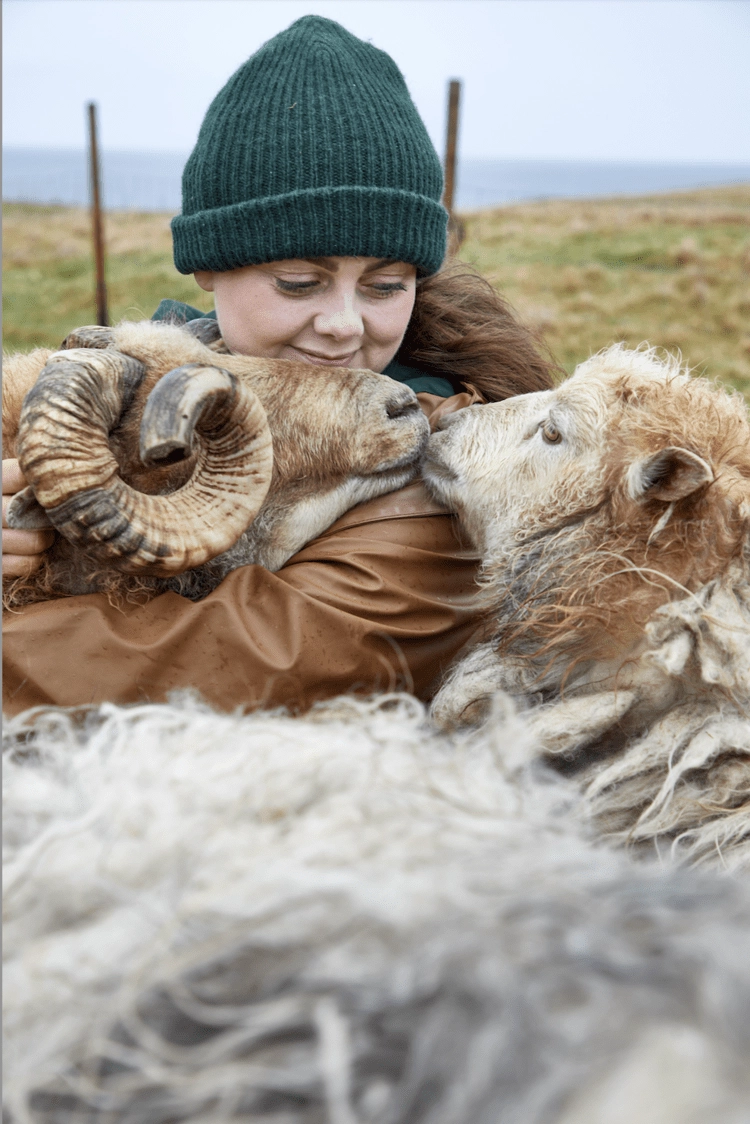
She then went on to explain that for her, the answer had been to embrace tourism, and so she had joined another scheme set up by Visit Faroes to ensure that tourism brings positive benefits to both locals and visitors. Called Heimablídni, this uniquely Faroese concept means ‘home hospitality’ and involves islanders – particularly farmers on remote islands – opening their homes to visitors, who come to sit down with their hosts and enjoy a traditional, often entirely homegrown, meal. The hosts benefit from an additional income, while both parties get to learn more about the life and culture of the other.
When I asked her specifically about the Closed for Maintenance project, Harriet was gushing in her praise. ‘It’s very beneficial to both farmers and locals in general. It helps farmers improve the land, paths for tourism and, this year, it even helped a farmer fence in an area dedicated to nature conservation. We hope to one day do a project on our farm with Closed for Maintenance.’
Her obvious enthusiasm for using tourism as a way of improving the Faroese environment reminded me of the last thing that Óluva Poulsen, back in Tjørnuvík, had told me as we had finished the last of our waffles:
‘In my view, Closed for Maintenance is a brilliant idea that connects people on a deeper level, where the value extends beyond individual participation. It embodies a collective effort to protect and enhance our surroundings while building meaningful connections.’
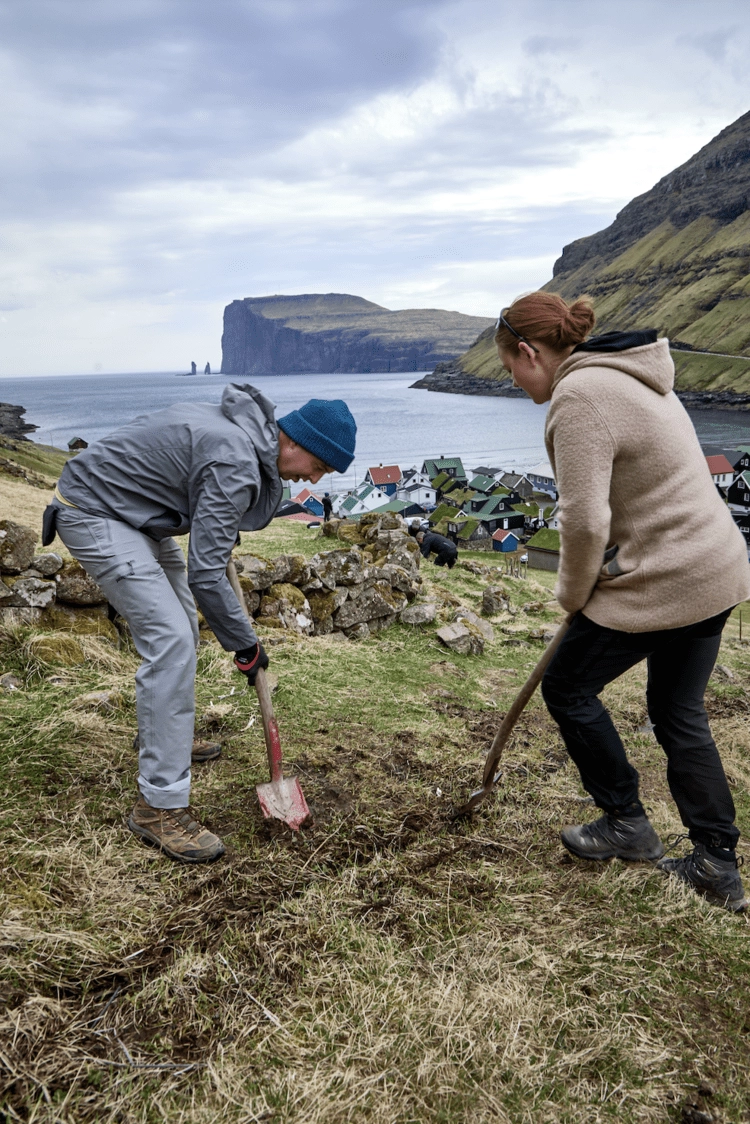
And, whether we are talking about a single tourist in the Faroes hiking a muddy cliff path to watch the colourful antics of puffins on their nests, or 10,000 tourists swarming down Las Ramblas in Barcelona, those last words of Óluva’s, which envisage a world in which tourism, done in a sustainable and respectful manner, can be used as a tool to protect and enhance our surroundings while building meaningful connections between each other, is a goal we should all be aiming for.
For more information on the Closed for Maintenance project see: visitfaroeislands.com/en/closed

